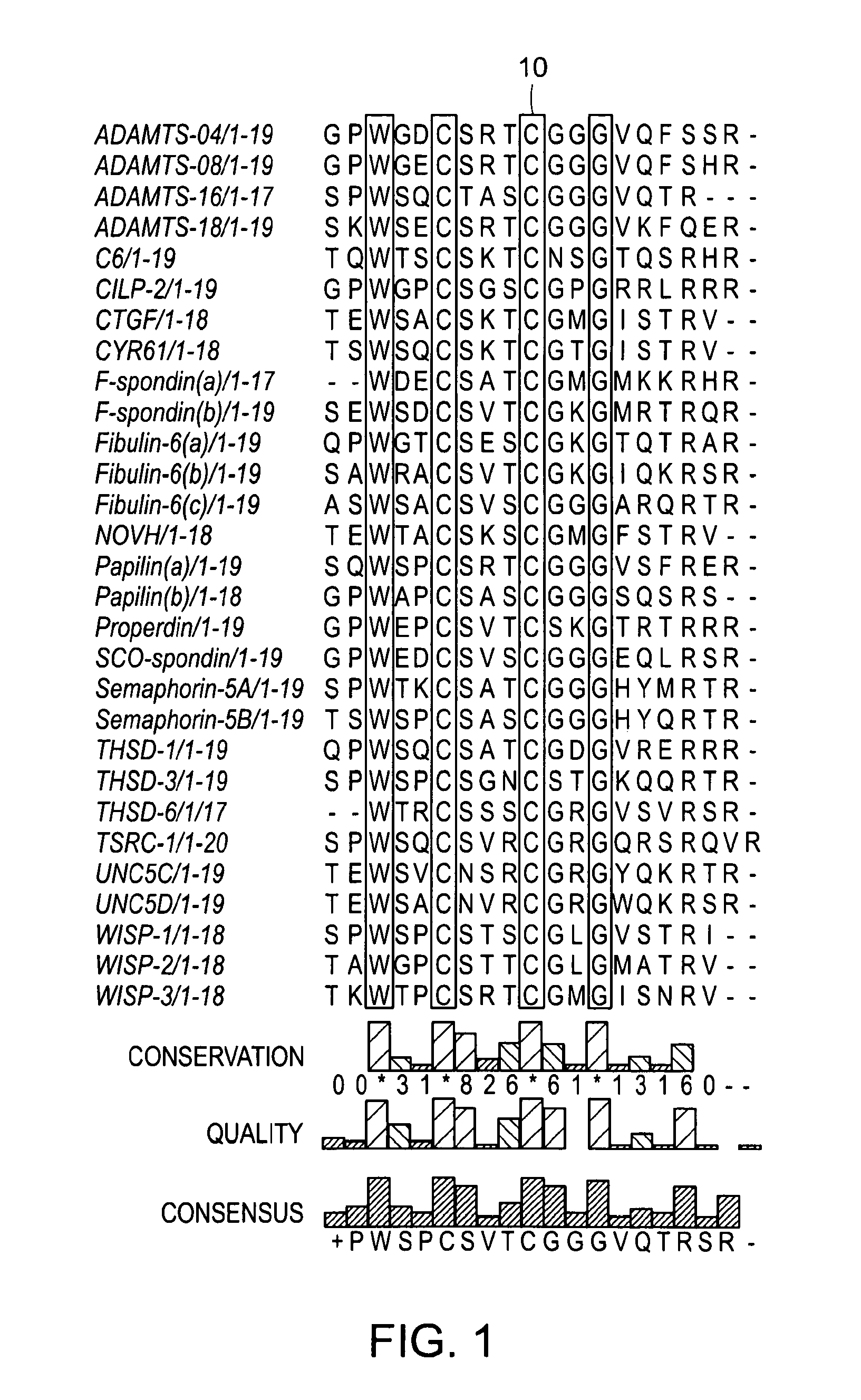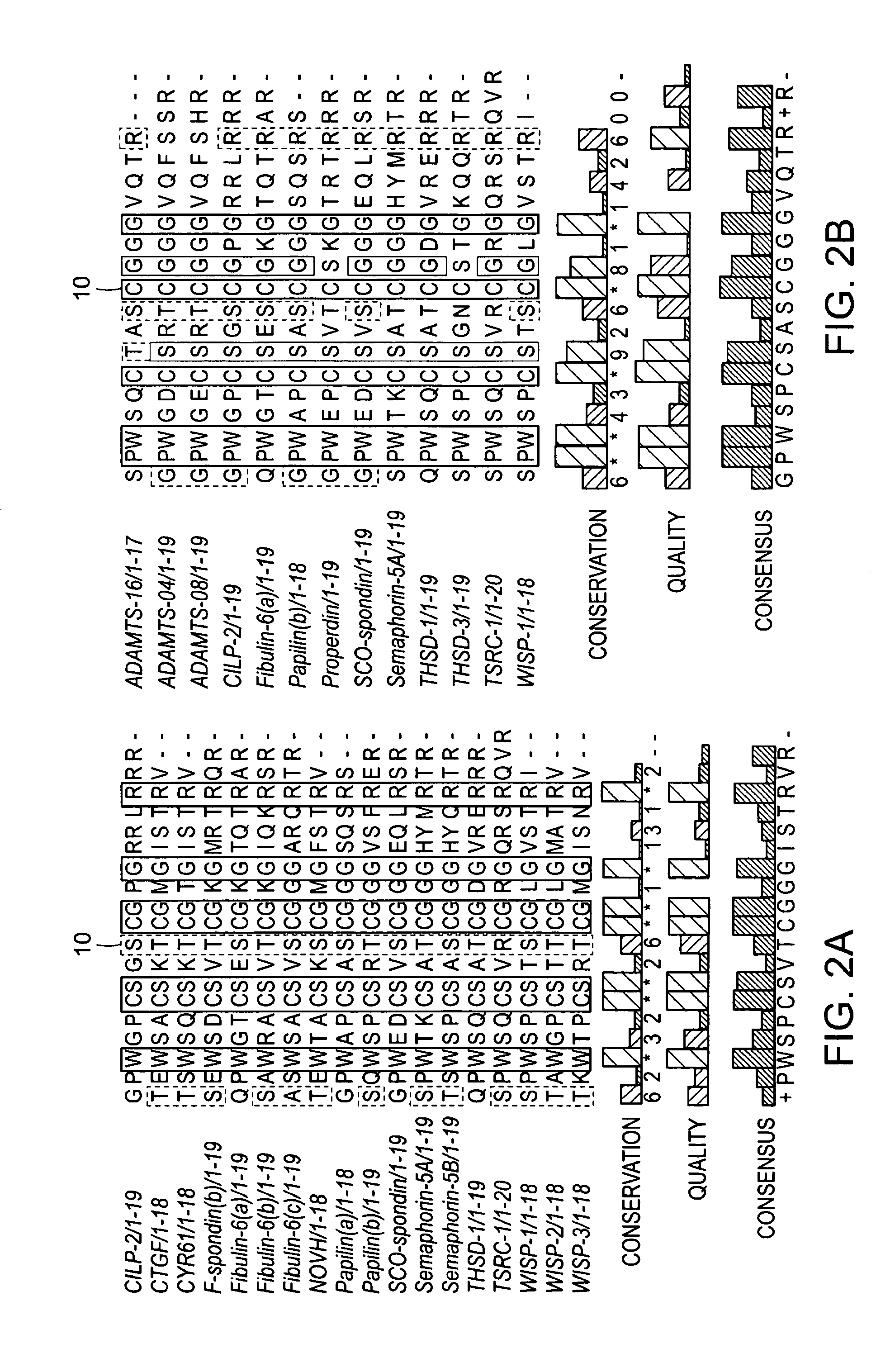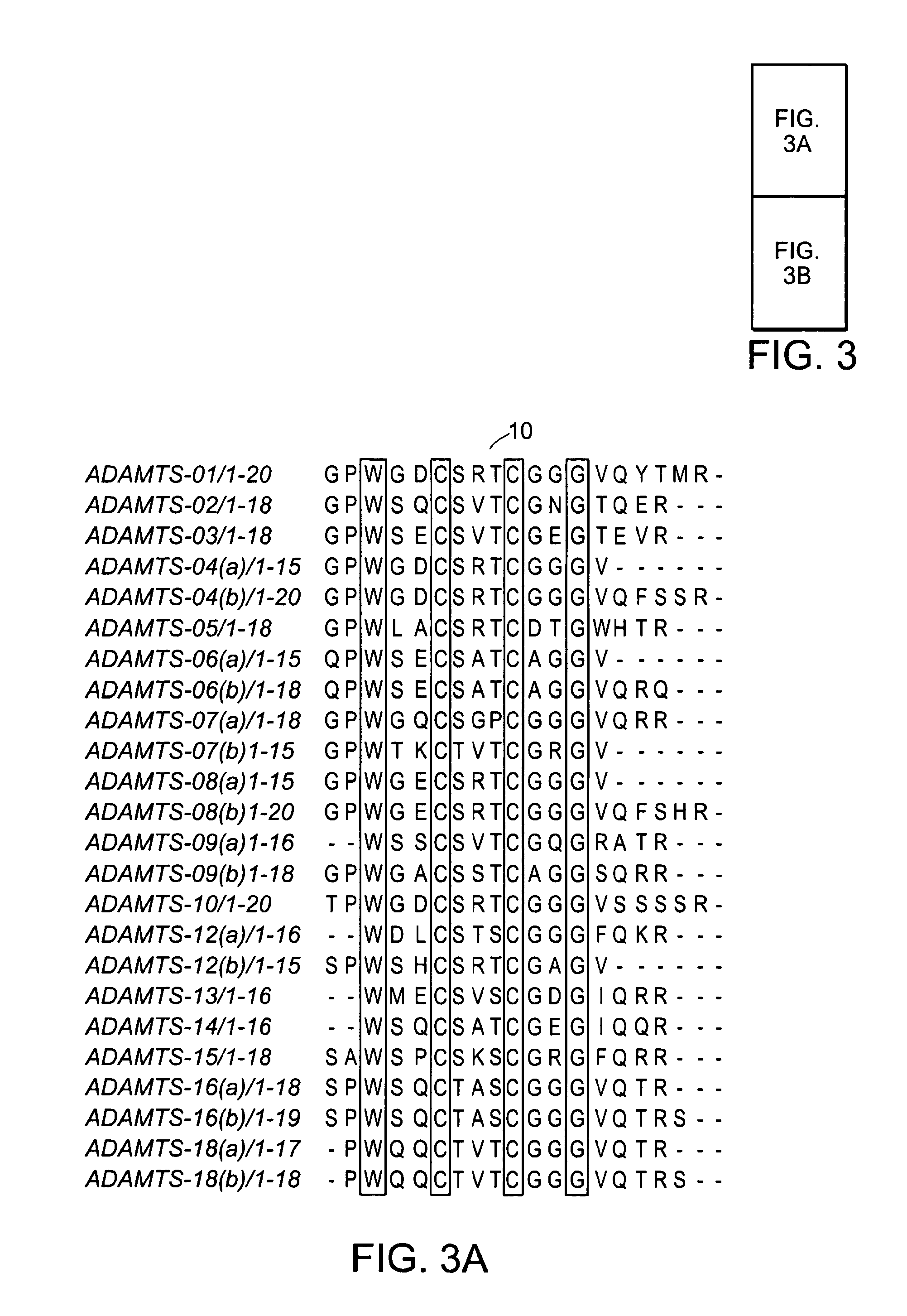Peptide modulators of angiogenesis and use thereof
an angiogenesis and peptide technology, applied in the field of peptide modulators of angiogenesis, can solve the problems of time-consuming empirical process for experimental identification of such agents, and achieve the effect of reducing the probability of developing a disorder
- Summary
- Abstract
- Description
- Claims
- Application Information
AI Technical Summary
Benefits of technology
Problems solved by technology
Method used
Image
Examples
example 1
Analysis of Peptide Motifs
[0286]Using bioinformatic analysis 156 peptides with anti-angiogenic properties were identified based on their sequence similarity with known anti-angiogenic peptides. A number of these peptides were screened for anti-angiogenic activity using an endothelial cell proliferation assay to identify peptide motifs associated with anti-angiogenic activity. Multiple sequence alignments were used to identify peptides having conserved motifs that are common in a variety of sequences. Multiple sequence alignment was performed using the ClustalW algorithm to align sequences of peptides that belong to different protein families including type I thrombospondin repeat-containing proteins, C-X-C chemokines, collagen type IV, somatotropins and serpins. In order to perform the alignment a critical number of peptide sequences were required. The motifs were represented using the single letter abbreviations of the amino acids that are common and the letter “X” to denote a non-...
example 2
Thrombospondin-1 (TSP-1) Repeat-Containing Proteins Derived Peptides
[0289]From the 31 predicted and experimentally tested TSP-1 containing short peptides 29 share a global 4 letter common motif which is the X2-W-X2-C-X3-C-X2-G-X7, or W-X2-C-X3-C-X2-G after removing the uncommon edges, resulting in the generic TSP-1 containing 20-mer (FIG. 1). The first amino acid that succeeds the first cysteine of the motif, or the seventh amino acid of the sequence can alternate between T, S and N. Thus a more generic description of this motif is X2-W-X2-C-(T / S / N)-X2-C-X2-G-X7 with threonine or serine the most abundant alteration for the seventh amino acid position.
[0290]By altering the threshold of the conserved amino acids that are common among the sequences of the predicted peptides we can create subsets of peptide families with individual common motifs of greater length than the global 4-letter motif. The threshold here is defined as the percentage of the peptides that share a common motif. Su...
example 3
Peptides Derived from C-X-C Chemokines
[0299]For the six predicted and experimentally tested C-X-C chemokines, all of them contain a six amino acid common motif. Following the thus far used notation this motif can be described as X-G-X3-C-L-X-P-X10-K-X-L (FIG. 4). There are few common alterations that occur within the sequences of the predicted fragments. For all those cases the motif can be re-written as (N / D)-G-(R / K)-X2-C-L-(N / D)-P-X2-(P / N)-X2-(K / Q)-(K / Q)-(I / V)-(I / V)-(E / Q)-K-X-L.
[0300]
TABLE 3The C-X-C chemokine 22-mer with all the possible amino acid substitutionsAA#1AA#2AA#3AA#4AA#5AA#6AA#7AA#8AA#9AA#10AA#11N(4)G(6)R(3)K(3)A(2)C(6)L(6)D(4)P(6)A(2)A(3)D(2)K(3)E(2)I(2)N(2)E(2)S(2)Q(1)L(1)D(1)E(1)V(1)K(1)AA #12AA #13AA #14AA #15AA #16AA #17AA #18AA #19AA #20AA #21AA #22P(6)F(2)V(3)K(4)K(5)I(3)I(4)E(3)K(6)I(3)L(6)I(1)L(2)Q(2)R(1)V(3)V(2)Q(3)F(1)M(1)I(1)K(1)R(1)M(1)W(1)
[0301]The generic 22-mer of the predicted C-X-C chemokines including all the possible substitutions is presented in Ta...
PUM
| Property | Measurement | Unit |
|---|---|---|
| protease resistance | aaaaa | aaaaa |
| pharmaceutical composition | aaaaa | aaaaa |
| stability | aaaaa | aaaaa |
Abstract
Description
Claims
Application Information
 Login to View More
Login to View More - R&D
- Intellectual Property
- Life Sciences
- Materials
- Tech Scout
- Unparalleled Data Quality
- Higher Quality Content
- 60% Fewer Hallucinations
Browse by: Latest US Patents, China's latest patents, Technical Efficacy Thesaurus, Application Domain, Technology Topic, Popular Technical Reports.
© 2025 PatSnap. All rights reserved.Legal|Privacy policy|Modern Slavery Act Transparency Statement|Sitemap|About US| Contact US: help@patsnap.com



